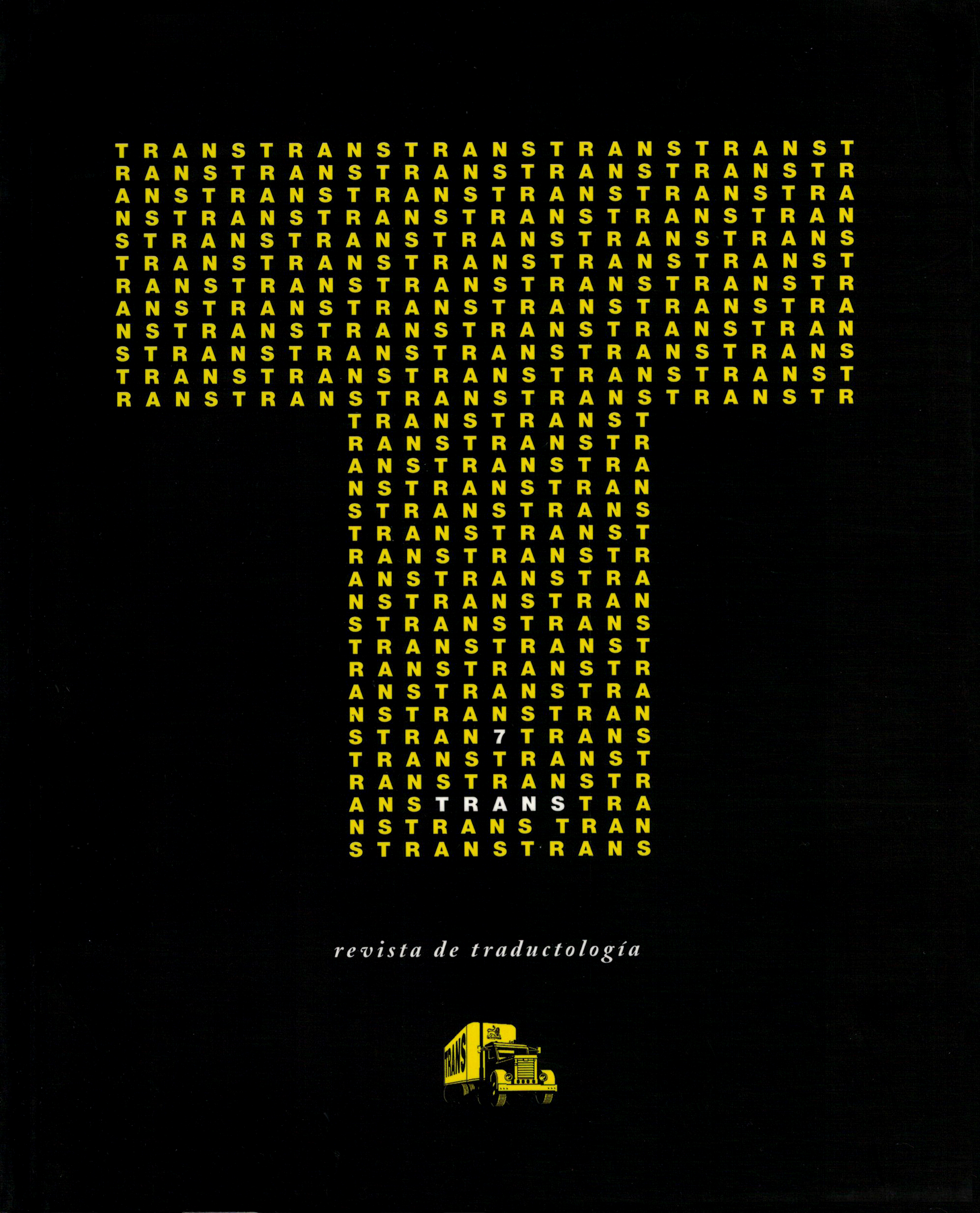Variedades de traducción a la vista. Definición y clasificación
DOI:
https://doi.org/10.24310/TRANS.2003.v0i7.2946Abstract
La traducción a la vista, o reformulación oral en lengua de llegada de un texto escrito en lengua de partida, es una actividad de traducción ampliamente utilizada tanto en el campo profesional como en el pedagógico. Recibe distintas denominaciones sin que se clarifique habitualmente si se trata de una misma actividad de traducción o de actividades distintas. En este artículo se plantean dos funciones de la traducción a la vista: comunicativa e instrumental. La función comunicativa representa una modalidad de interpretación ya que se caracteriza por traducir en vivo y en directo para un receptor oyente. Existen diversas subvariantes de la función comunicativa según el grado de preparación del texto, el interés del receptor por conocer el contenido del texto, la existencia de un discurso oral más o menos simultáneo y base del texto escrito. La función instrumental supone que la traducción a la vista es un medio para obtener un fin que es, o bien una traducción escrita o la enseñanza de la traducción y la interpretación o segundas lenguas. Cada uno de estas subvariantes de la función instrumental se matiza y sigue subdividiéndose según distintos parámetros de funcionalidad.
Downloads
Metrics
Publication Facts
Reviewer profiles N/A
Author statements
Indexed in
-
—
- Academic society
- N/A
- Publisher
- Universidad de Málaga
Downloads
Published
How to Cite
Issue
Section
License
All contents published in TRANS. Revista de Traductología are protected under the Creative Commons Attribution-NonCommercial-ShareAlike 4.0 International (CC BY-NC-SA 4.0) license. All about this license is available in the following link: <http://creativecommons.org/licenses/by-nc-sa/4.0>
Users can copy, use, redistribute, share and exhibit publicly as long as:
- The original source and authorship of the material are cited (Journal, Publisher and URL of the work).
- It is not used for comercial purposes.
- The existence of the license and its especifications are mentioned.
- ShareAlike — If you remix, transform, or build upon the material, you must distribute your contributions under the same license as the original.
There are two sets of authors’ rights: moral and property rights. Moral rights are perpetual prerogatives, unrenounceable, not-transferable, unalienable, imprescriptible and inembargable. According to authors’ rights legislation, TRANS. Revista de Traductología recognizes and respects authors moral rights, as well as the ownership of property rights, which will be transferred to University of Malaga in open access.
The property rights are referred to the benefits that are gained by the use or the dissemination of works. TRANS. Revista de Traductología is published in an open access form and it is exclusively licenced by any means for doing or authorising distribution, dissemination, reproduction, , adaptation, translation or arrangement of works.
Authors are responsable for obtaining the necessary permission to use copyrighted images.













21.png)
